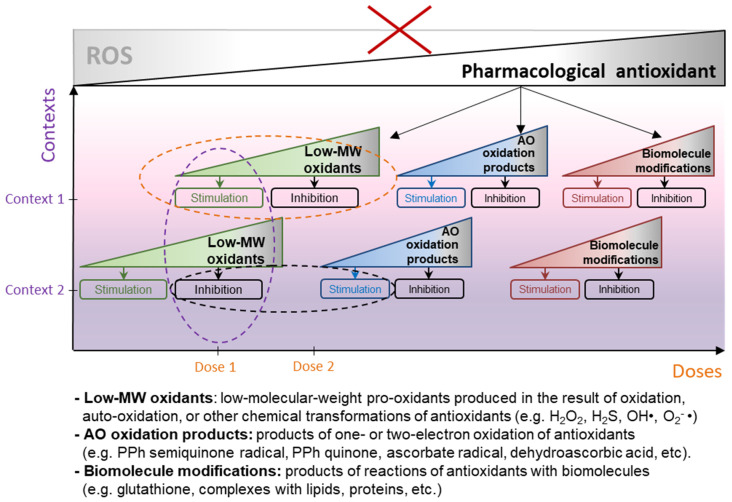Figure 7.
Pleiotropic action of pharmacological antioxidants: product-dose-context plot. In vivo, the ability of pharmacological antioxidants (those considered in this review and many others) to suppress ROS metabolism has not been proved. There is no unequivocal relationship between the concentration of antioxidants and intracellular level of ROS—neither in experiments on cell cultures, nor in animal models, much less in clinical trials on humans. The scheme shows how these drugs really act in biological systems—they produce low-molecular-weight pro-oxidants, pro-oxidative metabolites, interact with biomolecules (amino acids, lipids, proteins, etc.), thus activating intracellular redox metabolism. The overall outcome strictly depends on the dose and biological context. The opposite effects of pharmacological antioxidants (stimulation and inhibition of cell proliferation, adaptation, inflammatory reactions, DNA damage, cellular senescence, etc.) do not contradict each other but are explained by the dose- and context-dependent mode of their pleiotropic action.

